I’ve been on a health kick for about five years now, attempting to learn as much as I can about alternative medicine, the health benefits of herbs and spices, and different types of longevity diets.
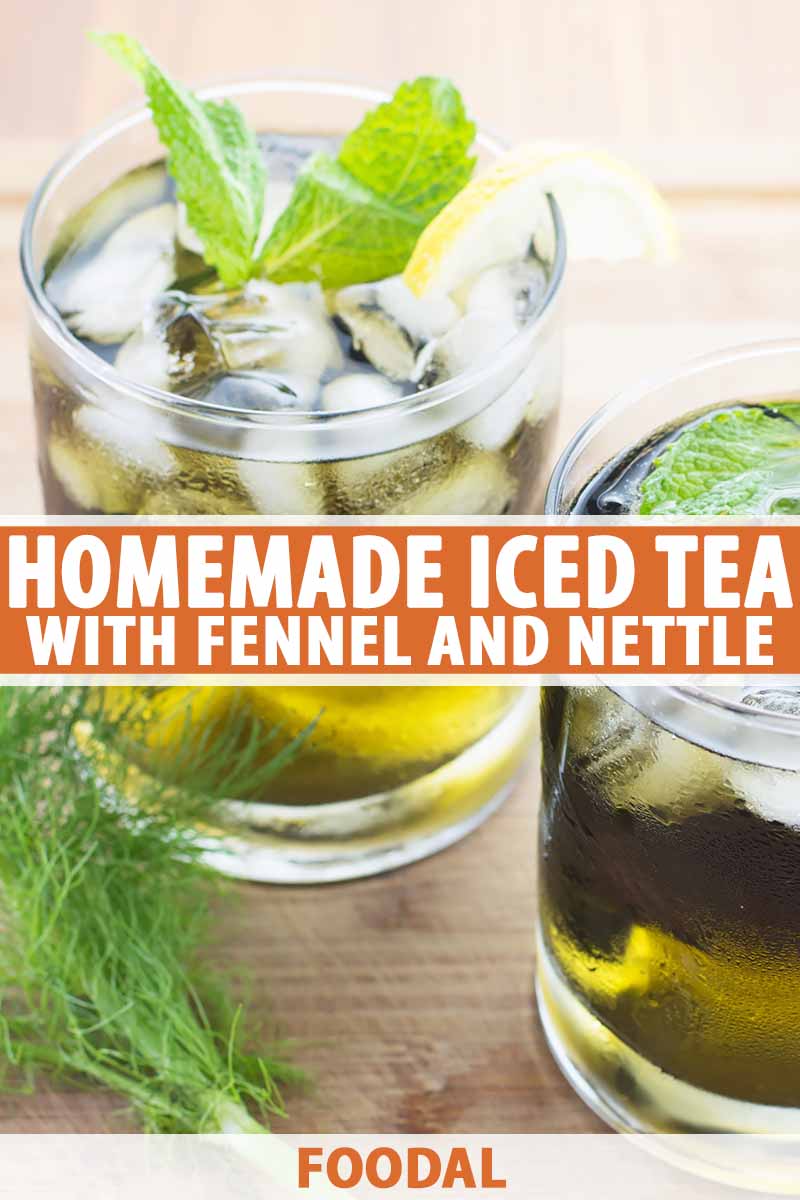
One type of food keeps popping up in my research and endless Google searching:
Tea.
Every culture has its own variations on tea, some vastly different than others in terms of cultivation and preparation. But I’ve found they all have one thing in common – they typically promote tea as a beverage that is healthy for you.
I’ve discovered there are significant differences between brews made with tea leaves from the Camellia sinensis plant and their (almost always) naturally decaffeinated counterparts, herbal infusions that are also known as tisanes.
And once I learned about the myriad herbs and other plants that can be steeped and made into tea, my health worldview exploded.
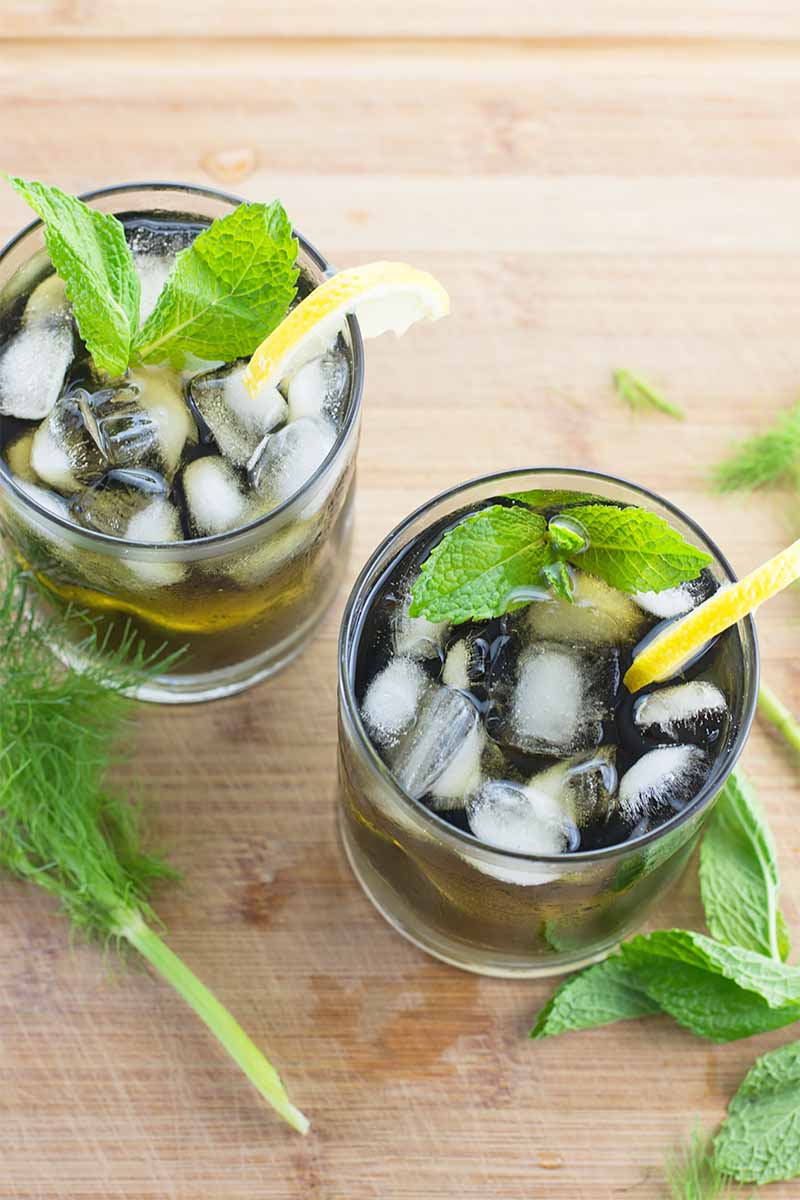
One such herb, stinging nettle, flew under my radar until recently. With a little digging online, I was shocked to learn how potent this herb actually is.
Not only does nettle leaf deliver an assortment of vitamins and minerals, it is also said to offer a variety of potential health benefits ranging from alleviating the symptoms of hay fever and arthritis, to giving a healthy boost to hair and nails.
I knew I definitely wanted to add it to my daily regimen.
Nettle tea bags are easy to find at the supermarket or online. But you can also search for foraged nettle to purchase locally, or harvest your own. You can even learn how to grow it on our sister site, Gardener’s Path.
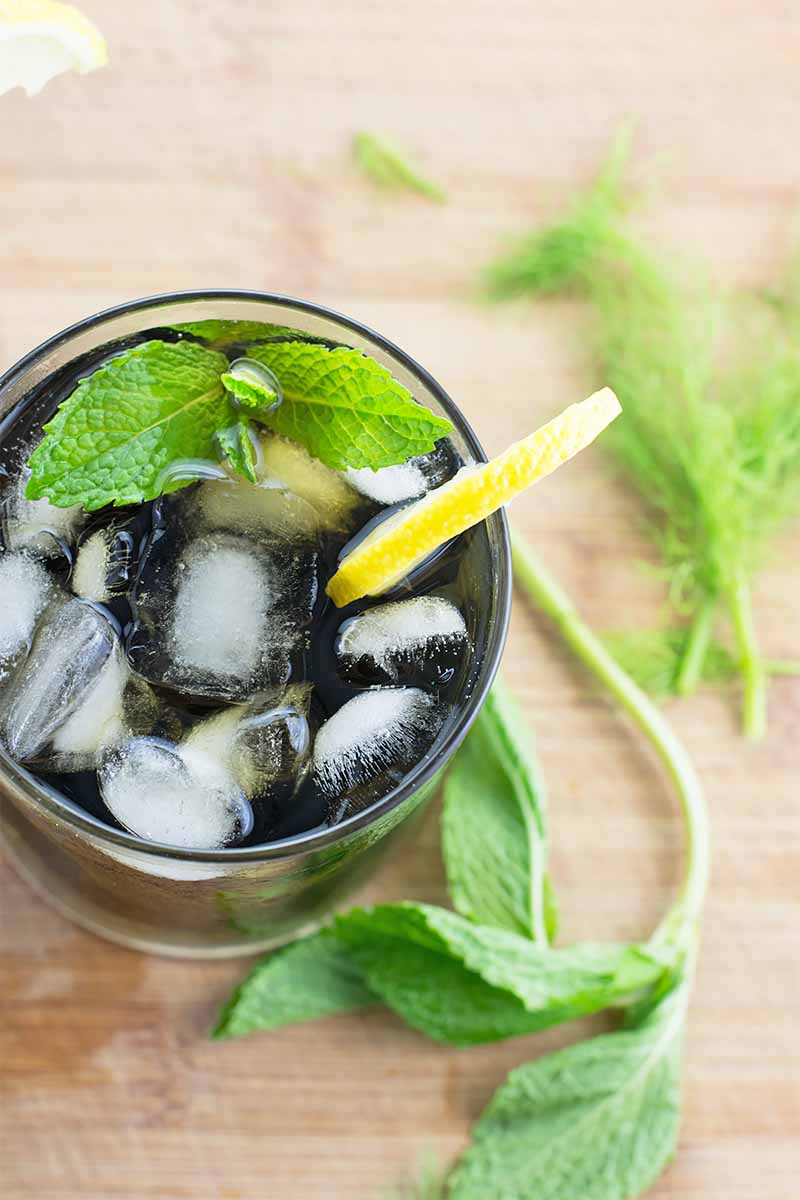
The preparation I prefer calls for tea bags of dried leaves. The leaves have a grassy, earthy flavor that I find tastes just a bit like mild spinach.
If fresh foraged leaves are available, here are a couple of tips for using them:
- Do not eat the leaves of this plant raw. This herb’s full name is “stinging nettle” for a reason – the plant is covered with tiny stingers that may cause a burning sensation if you brush up against them. (This is why I prefer to use tea bags).
- After washing them, being sure to handle them carefully, boil fresh leaves for about 1 minute, then rinse them with cold water. The stingers will brush off easily with a towel.
- To use fresh nettle leaves in an herbal tea or infusion, just add about a handful to a few cups of boiling water, and let them steep for about 20 minutes before straining.
In our recipe, fennel adds a lovely punch of anise flavor. You can choose to use the bulb, the fronds if they are still attached, or a mixture of the two.
This combination vegetable and herb is no slouch in the health department, either. Bursting with calcium, magnesium, potassium, vitamin A, vitamin B6, folate (B9), and vitamin C, it’s also a natural source of estrogen.
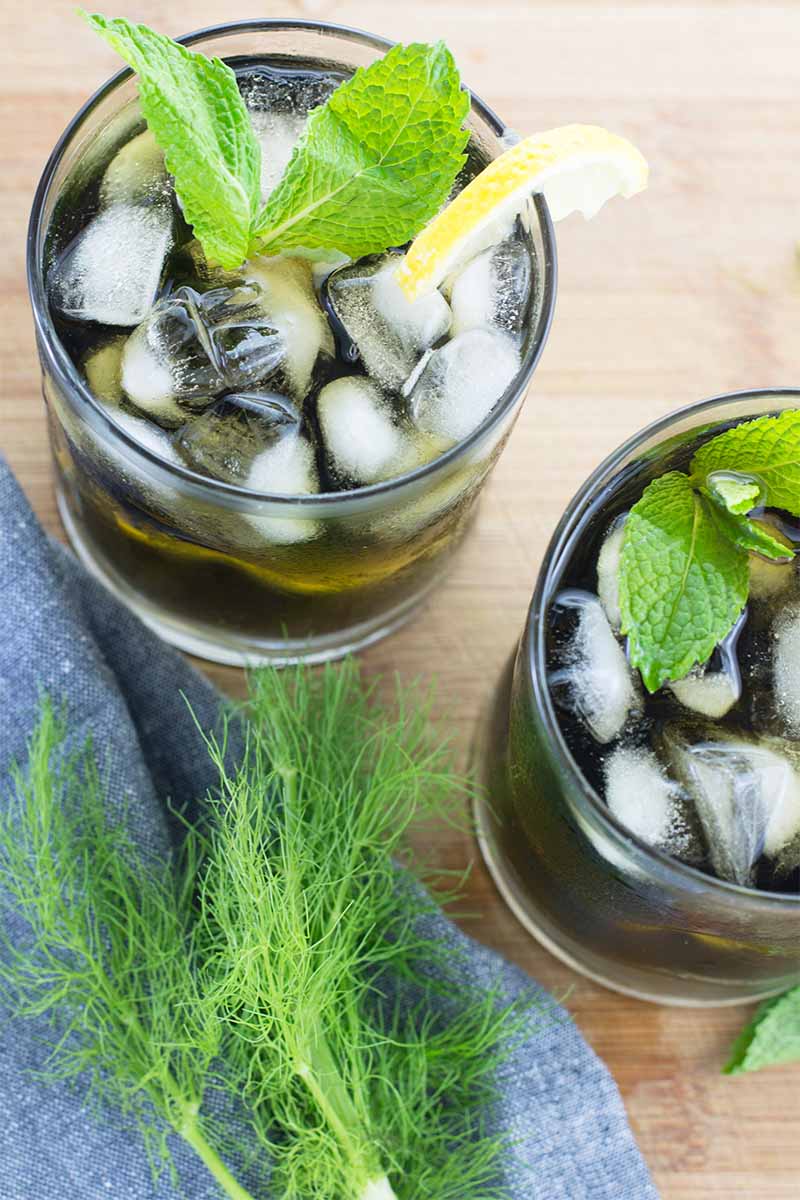
Mint, also a part of the nettle family, complements the other herbs beautifully, adding a bit of brightness to the blend.
Topped off with lemon juice and a bit of honey for sweetness, this infusion has a subtly sweet, earthy, and light flavor. Served over ice, it is so refreshing on a hot day.
I usually strain out the fennel bits and the mint before serving. But both are entirely edible, and you’ll add to the nutritional value of the tea if you choose to consume them instead.
To your good health!
Print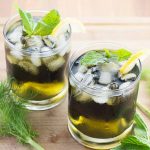
Fennel Nettle Iced Tea
- Total Time: 1 hour, 25 minutes
- Yield: 4 servings 1x
Description
This earthy and aromatic herbal iced tea is brimming with health benefits. Fennel and nettle supercharge the flavor, with a hint of anise.
Ingredients
- 5 cups cold water
- 3 nettle tea bags
- 1 tablespoon chopped fresh fennel (bulb or fronds)
- 4 sprigs fresh mint (about 1/4 ounce)
- 3 tablespoons local honey
- 3 tablespoons freshly squeezed lemon juice
Instructions
- Add 5 cups cold water to a medium-size pot. Place over medium heat.
- Bring to a boil, then remove from heat.
- Add nettle tea bags to the pot. Allow to steep for 10 minutes.
- Add fennel and mint. Stir in the honey.
- Cool to room temperature, then chill in the refrigerator for at least one hour.
- Remove the teabags. Strain into a pitcher, and stir in the lemon juice.
- Serve over ice.
- Prep Time: 5 minutes
- Cook Time: 20 minutes
- Category: Tea
- Method: Stovetop
- Cuisine: Beverage
Keywords: fennel, nettle, iced tea, mint, honey, lemon
Cooking By the Numbers…
Step 1 – Steep Nettle Leaf
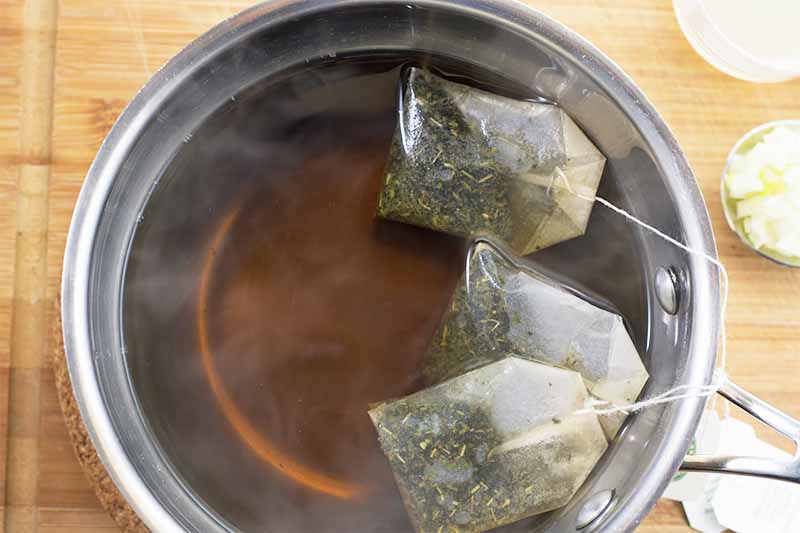
Using a medium-sized pot over medium heat, add 5 cups cold water.
Bring to a boil, then remove from heat.
Add the tea bags to the pot, or fresh stinging nettle leaves if you are using them. Cover and allow to steep for 10 minutes. The water will turn a lovely mahogany color.
At this point, you could remove the tea bags if you like. I prefer to allow them to continue steeping, for a stronger flavor.
Step 2 – Prep and Add Other Ingredients
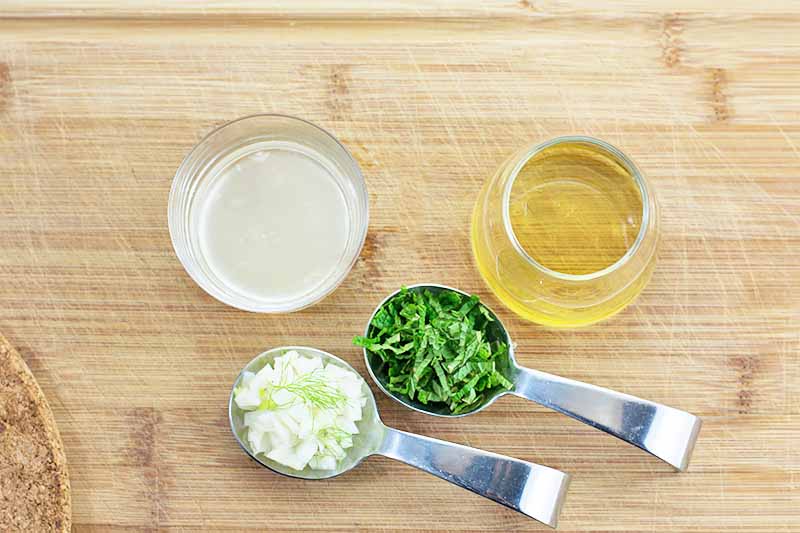
While the water is boiling and the tea is steeping, prep the rest of your ingredients.Rinse the fennel bulb and/or fronds well with cold water. With a sharp knife and sturdy cutting board, finely chop about one tablespoon of the vegetable or herb, and set it aside.
Rinse the mint sprigs well in cold water, and set them aside. If you do not have fresh mint available, peppermint tea makes a wonderful substitute (it’s just the dried leaves, after all!).
Squeeze about 3 tablespoons of juice from one lemon, remove any seeds, and set it aside.
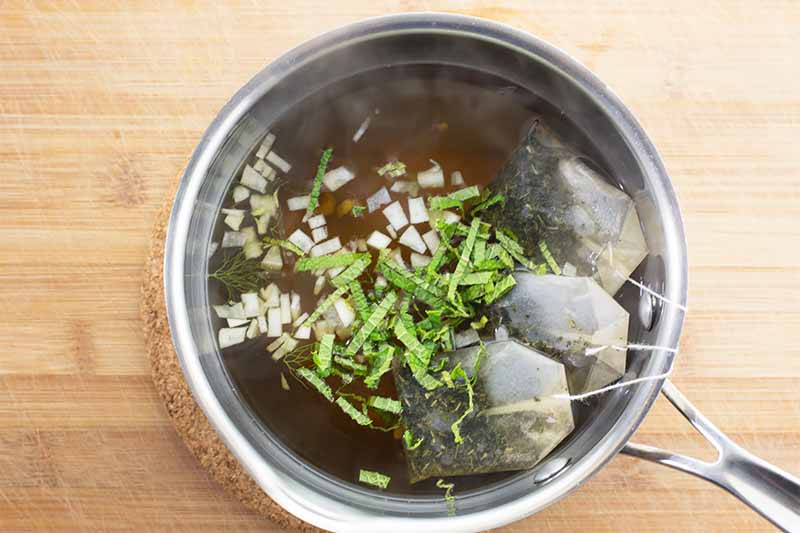
After the dried or fresh nettle leaves have steeped for 10 minutes, add the fennel and mint to the pot. Stir in the honey, until it dissolves completely.
If you want to make a vegan version, feel free to use your choice of sweetener. I prefer to stir it in during this step to make sure it dissolves, but you can feel free to add stevia, agave syrup, or granulated vegan sugar to taste just before serving, if you prefer.
Step 3 – Chill, Add Lemon, and Serve
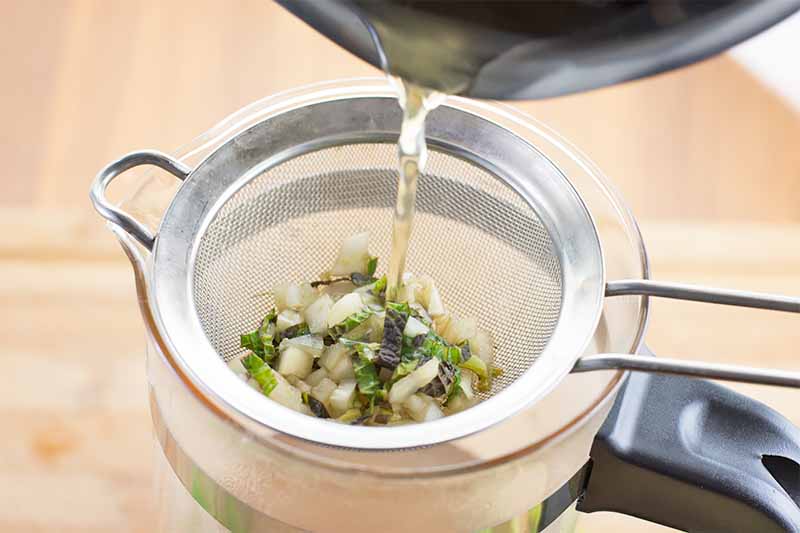
Allow the ingredients to steep for at least 10 more minutes.
At this point, you may strain out all of the tea ingredients if you choose, depending on your flavor preferences. I prefer to leave them in the water for an even stronger infusion.
Allow the tea to cool to room temperature.
Refrigerate for at least one hour, or until chilled.
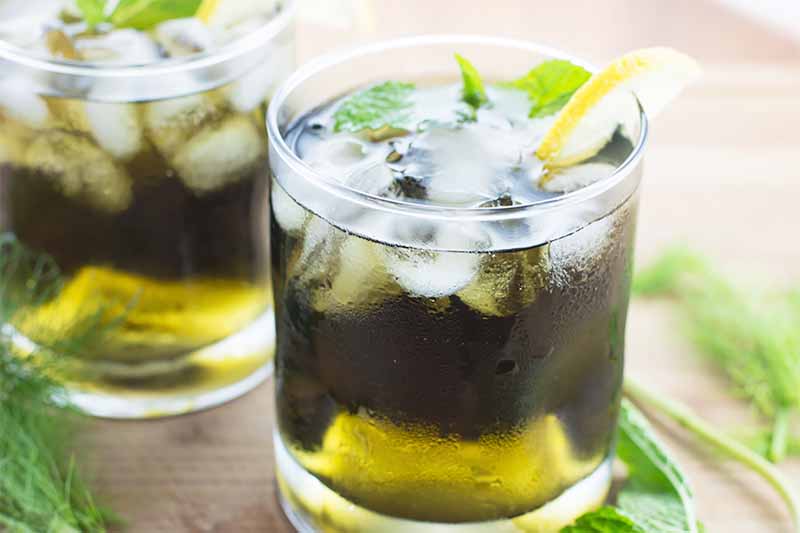
Strain through a cheesecloth or fine-mesh strainer into a pitcher. Stir in the lemon juice.
Serve over ice.
This herbal tisane will keep for up to two weeks in the fridge.
Big on Herbal Flavor (And Chock-Full of Nutrients)
Whether this is your first time trying stinging nettle or if you’ve been a fan of this medicinal plant for some time, I know you are going to love this tea.
The leaves contain vitamins C and E, calcium, potassium, folic acid, iron, and magnesium.
Renowned for its diuretic and anti-inflammatory properties, nettle leaf has been steeped in infusions and used by herbalists to treat a host of ailments from infections to allergies.
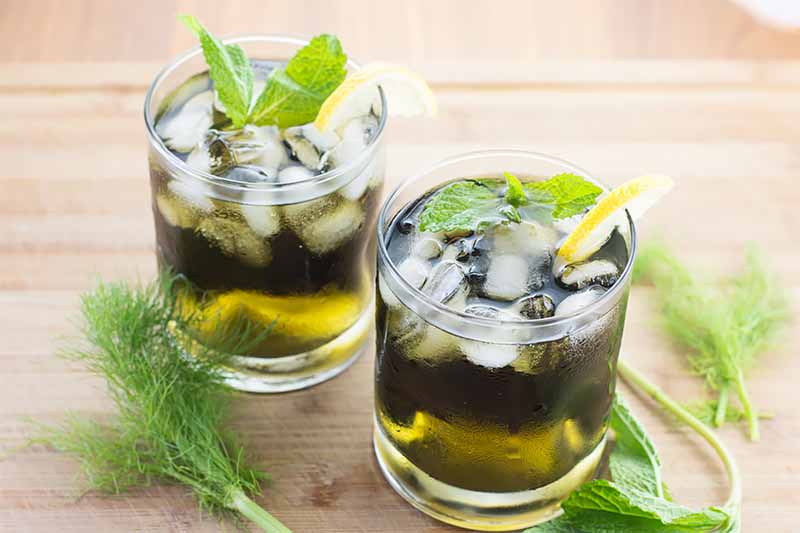
How did this tea turn out for you? Did you use honey, or something else to sweeten it?
Please let us know how you enjoyed it in the comments below. And don’t forget to give this recipe a five-star rating if you loved it!
Want to learn even more about the wide world of tea? Try a few of our other favorite recipes next:
- Krishna’s Golden Turmeric Tea
- Earl Grey Tea Flavored Shortbread Cookies
- Soothe Your Soul with the Healing Powers of Chai
Photos by Katherine and Eddie D’Costa, © Ask the Experts, LLC. ALL RIGHTS RESERVED. See our TOS for more details. Originally published by Shanna Mallon on September 2, 2011. Last updated on June 14, 2020. With additional writing and editing by Allison Sidhu.
Nutritional information derived from a database of known generic and branded foods and ingredients and was not compiled by a registered dietitian or submitted for lab testing. It should be viewed as an approximation.
The staff at Foodal are not medical professionals and this article should not be construed as medical advice. Foodal and Ask the Experts, LLC assume no liability for the use or misuse of the material presented above. Always consult with a medical professional before changing your diet, or using supplements or manufactured or natural medications.
About Eddie & Katherine D'Costa
Eddie and Katherine D’Costa are a married professional chef and journalist duo from Atlanta, where they cook up a variety of international dishes, tested for the home cook. Katherine holds an MA in journalism from Northeastern University and Eddie’s professional experience spans 20 years working with Wolfgang Puck, Jean George Vongerichten, and Todd English.

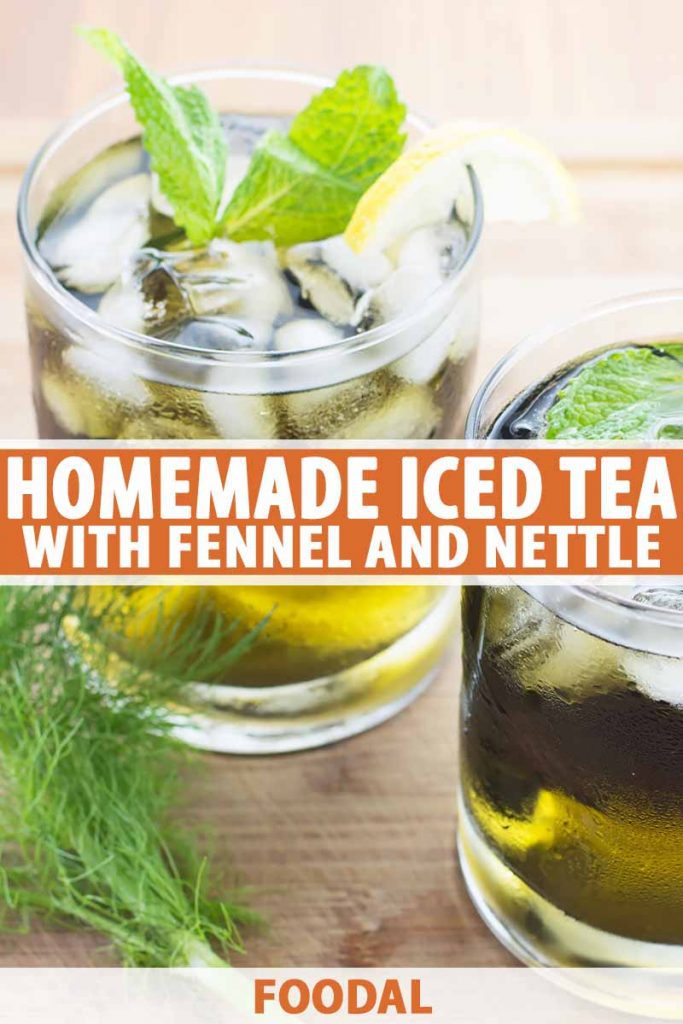
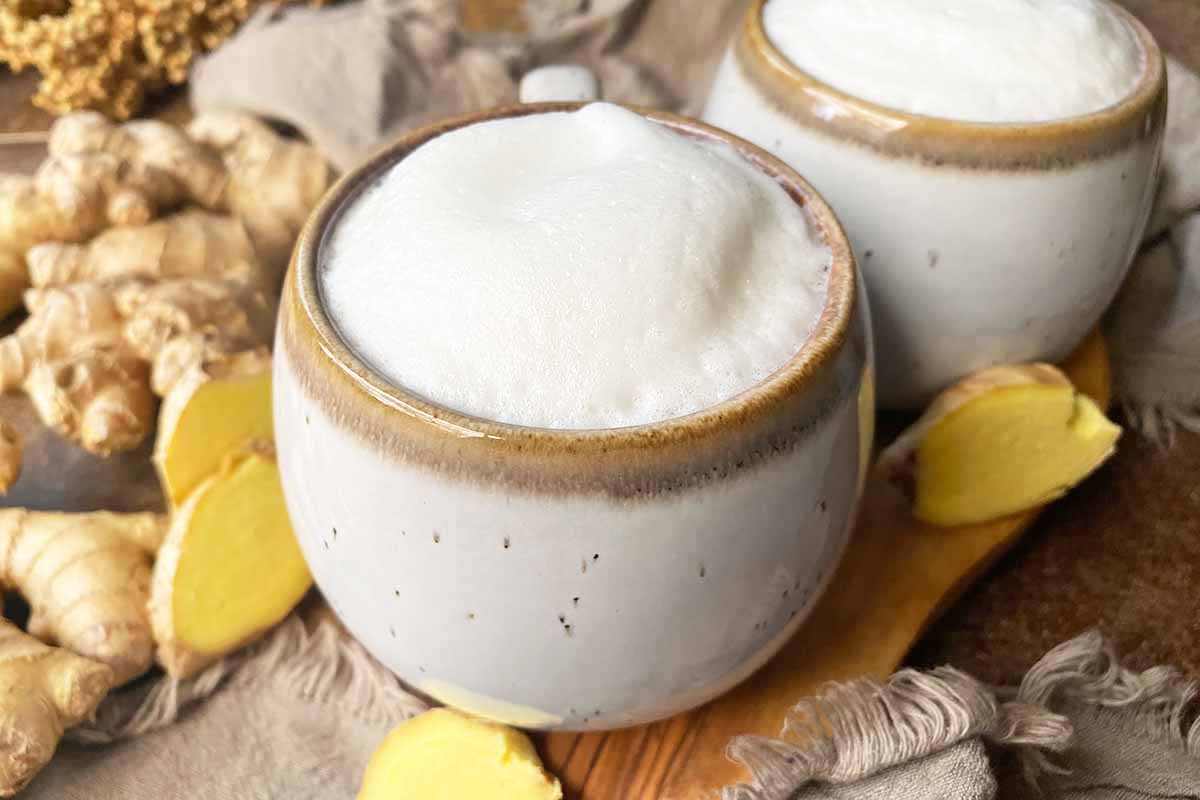
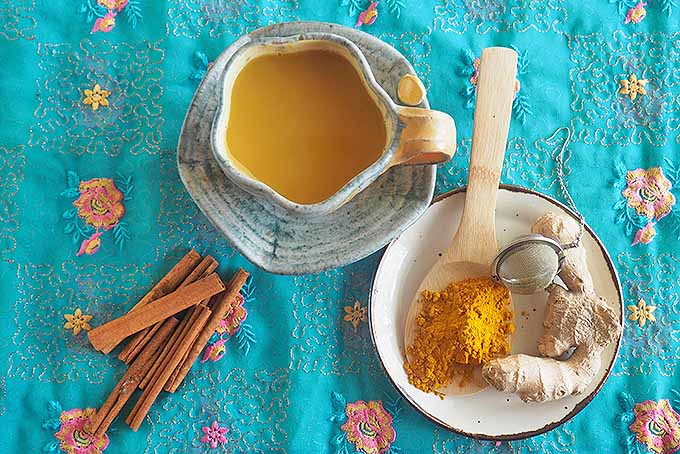
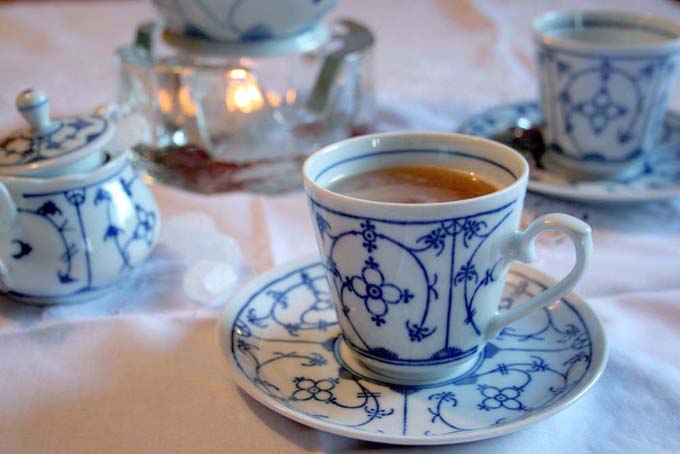
This tea sounds wonderful, I’m a huge fan of both fennel and nettle! Fabulous tea for cleansing as well.
Now I’m daydreaming of coming over, sharing some tea with you, and talking for a long, long while…
Your essays (and recipes) always leave me with something valuable. Thank you.
I truly love this post.
Love your fennel & nettle tea. I need to drink this soon!
This is a really nice recipe.
sounds great, have to try it my own
★★★★